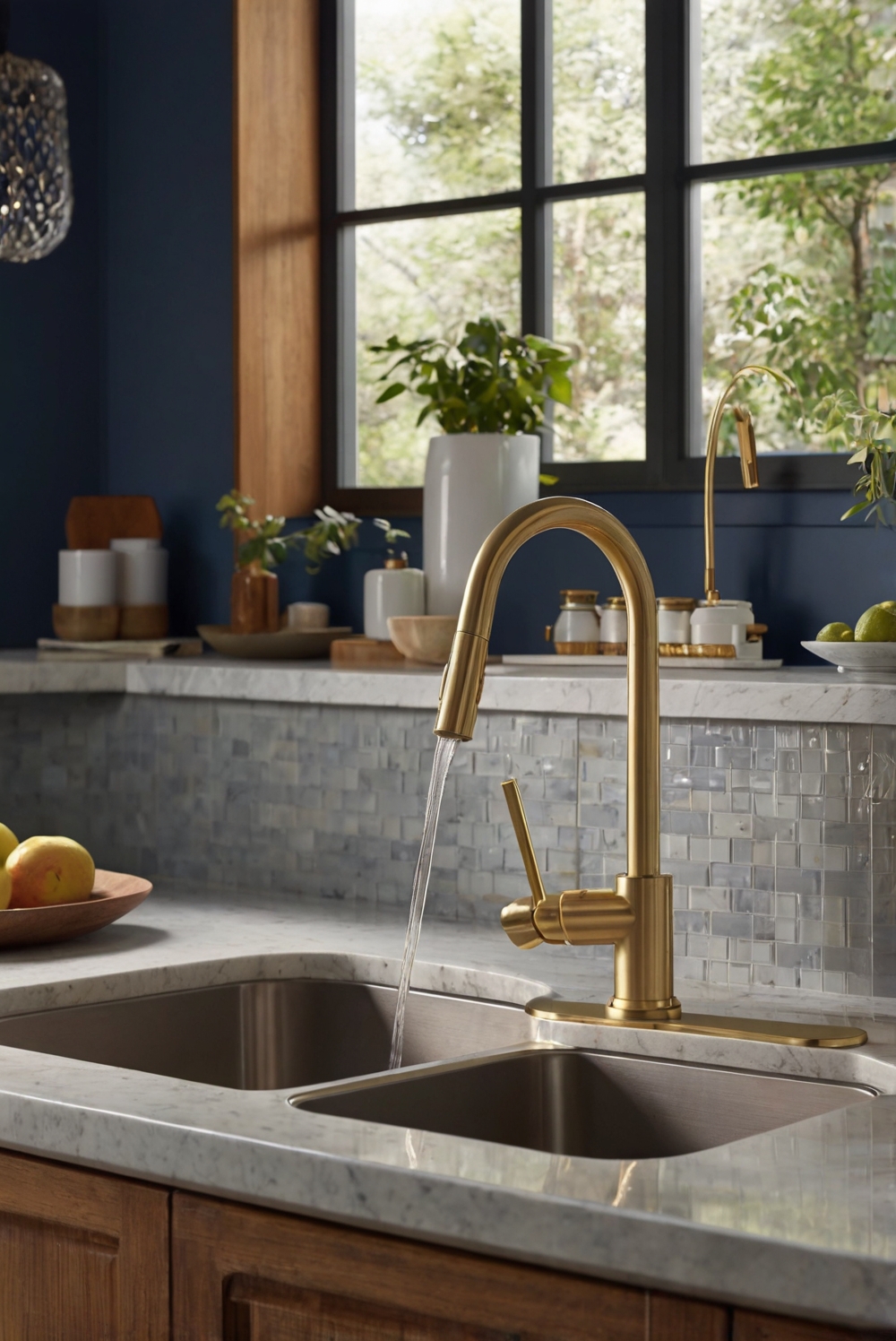Discover the convenience and elegance of touchless kitchen faucets in this daily interior designer routine. Explore the benefits and functionality they bring to your kitchen space.
Benefits of touchless kitchen faucets include:
1. Enhanced hygiene: Touchless faucets help in reducing the spread of germs and bacteria, promoting a healthier kitchen environment.
2. Convenience: The hands-free operation makes the task of washing dishes or cooking easier and more efficient.
3. Water conservation: Touchless faucets often come with adjustable flow rates and automatic shut-off features, helping to save water.
4. Modern aesthetic: These faucets add a sleek and contemporary look to your kitchen, enhancing the overall decor.
5. Longevity: Touchless faucets are durable and can withstand heavy daily use, making them a sustainable choice for your home.
By incorporating touchless kitchen faucets into your home decor interior design, you can create a stylish and functional space that prioritizes convenience and cleanliness. Remember to consider the compatibility of the faucet with your existing kitchen design and plumbing system, and opt for a reputable brand for quality assurance.
What are the benefits of touchless kitchen faucets?
Touchless kitchen faucets have gained popularity in recent years due to their numerous benefits. Convenience is one of the key advantages of touchless faucets. With a simple wave of your hand, you can turn the water on and off, making it easier to wash your hands or fill a pot without having to touch the faucet handle. This is especially useful when your hands are dirty or full, preventing cross-contamination and keeping your faucet clean.
Another important benefit of touchless kitchen faucets is water conservation. These faucets are equipped with sensors that control the flow of water, allowing for more efficient use. This can help reduce water waste and lower your water bill over time. Additionally, touchless faucets often come with features like automatic shut-off, which can further help in conserving water.
In terms of hygiene, touchless kitchen faucets are a great option. By eliminating the need to touch the faucet handle, you can prevent the spread of germs and bacteria in your kitchen. This is especially important during food preparation, as it can help prevent the contamination of food surfaces and utensils.
Touchless kitchen faucets also offer style and convenience in your kitchen. They come in a variety of designs and finishes to match your kitchen decor, adding a modern and sleek touch to your space. Additionally, the hands-free operation of these faucets makes tasks in the kitchen more efficient and hassle-free.
Are touchless kitchen faucets worth the investment?
Investing in a touchless kitchen faucet can be a smart decision for many homeowners. While touchless faucets may have a higher upfront cost compared to traditional faucets, the long-term benefits they offer make them worth the investment. The convenience, water conservation, hygiene, and style that touchless faucets provide can enhance your kitchen experience and make everyday tasks easier.
How do touchless kitchen faucets work?
Touchless kitchen faucets operate using sensors that detect motion or presence near the faucet. When you place your hand within the sensor range, the faucet activates and water starts flowing. The sensors are typically powered by batteries or electricity, and the sensitivity and range can be adjusted based on your preferences. Some touchless faucets also come with additional features like temperature control and automatic shut-off to further enhance the user experience.
What are some popular brands of touchless kitchen faucets?
There are several popular brands that offer touchless kitchen faucets, each with its own unique features and designs. Some well-known brands in the market include Delta, Moen, Kohler, Pfister, and Grohe. These brands are known for their quality craftsmanship, innovative technology, and stylish designs, making them reliable choices for touchless kitchen faucets.
How can you maintain a touchless kitchen faucet?
To ensure the optimal performance and longevity of your touchless kitchen faucet, regular maintenance is key. Here are some tips to help you maintain your touchless faucet:
– Clean the sensors regularly to remove any dirt or debris that may affect their sensitivity.
– Check for leaks or drips and repair them promptly to prevent water damage.
– Replace batteries or recharge the power source as needed to keep the faucet functioning properly.
– Use a mild cleaner and soft cloth to clean the faucet surface and prevent buildup of grime or mineral deposits.
By following these maintenance tips, you can keep your touchless kitchen faucet in top condition and enjoy its benefits for years to come.
1. How do touchless kitchen faucets promote hygiene and cleanliness?
Touchless kitchen faucets help reduce the spread of germs and bacteria by eliminating the need to touch the faucet handles with dirty hands. This reduces the risk of cross-contamination, especially when handling raw food. By simply waving your hand or an object in front of the sensor, you can easily turn the water on and off without touching the faucet, making it a more hygienic option for your kitchen.
2. Are touchless kitchen faucets more convenient to use?
Yes, touchless kitchen faucets offer added convenience as they allow you to turn the water on and off with a simple motion, making tasks like washing dishes or filling pots much easier. This hands-free operation is especially useful when your hands are full or dirty, as you can activate the faucet without needing to touch it, saving time and effort.
3. Do touchless kitchen faucets help conserve water?
Touchless kitchen faucets are designed to be more water-efficient than traditional faucets. The sensors on touchless faucets are programmed to deliver water only when needed, reducing the risk of leaving the water running accidentally. This feature helps conserve water and lower water bills, making touchless faucets a more environmentally friendly option for your kitchen.
4. Can touchless kitchen faucets help prevent the spread of germs in the kitchen?
Yes, touchless kitchen faucets are effective in preventing the spread of germs in the kitchen. By eliminating the need to touch the faucet handles, touchless faucets reduce the risk of transferring bacteria and viruses from your hands to the faucet and vice versa. This helps maintain a cleaner and more hygienic kitchen environment, promoting better health and wellness for you and your family.
5. Are touchless kitchen faucets easy to install and use?
Touchless kitchen faucets are relatively easy to install and use, making them a convenient addition to any kitchen. Most touchless faucets come with straightforward installation instructions and can be set up in a few simple steps. Once installed, using a touchless faucet is intuitive – simply wave your hand or an object in front of the sensor to activate the water flow. The touchless technology makes it easy to operate the faucet, even for children or individuals with limited mobility, enhancing the overall usability of your kitchen.




